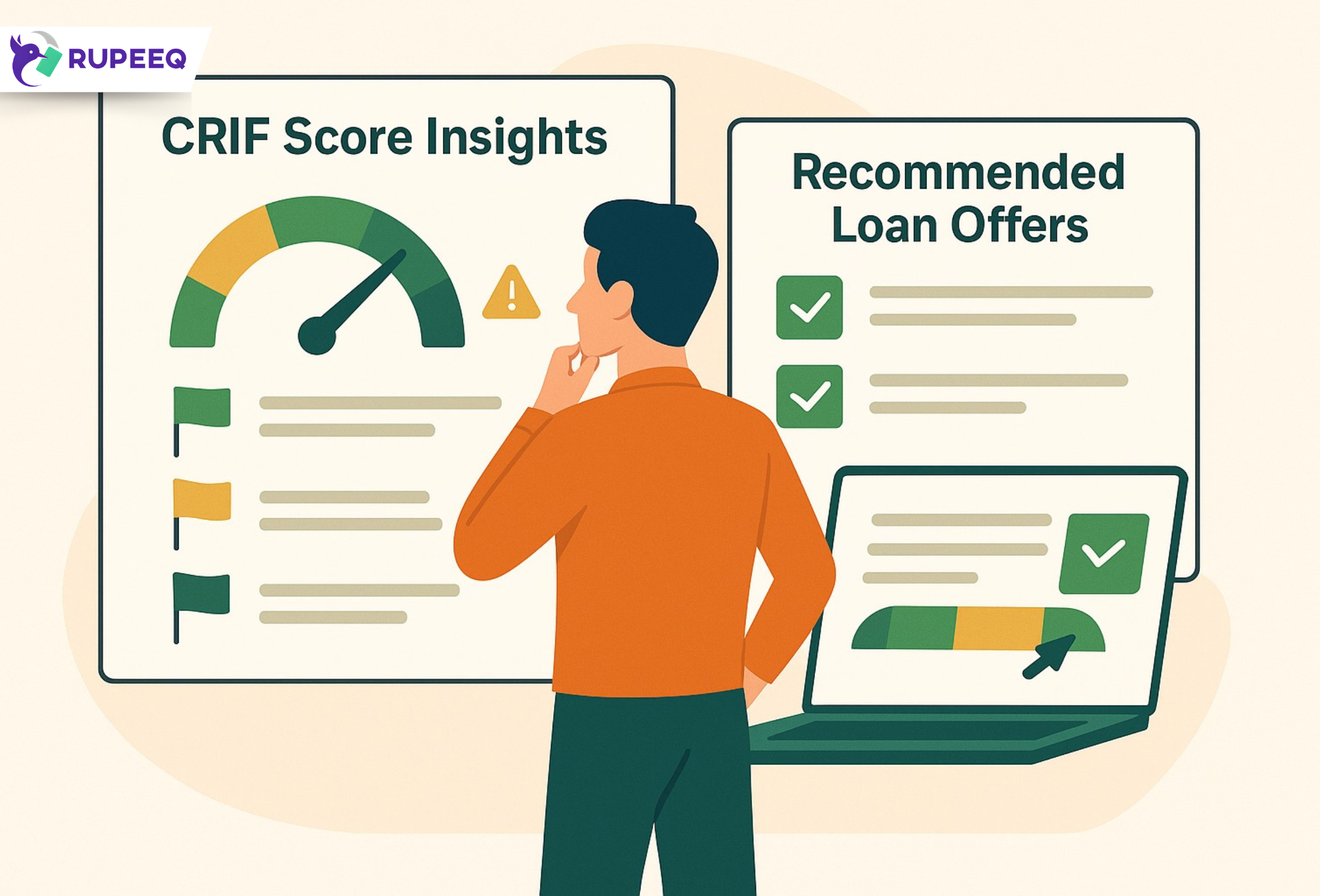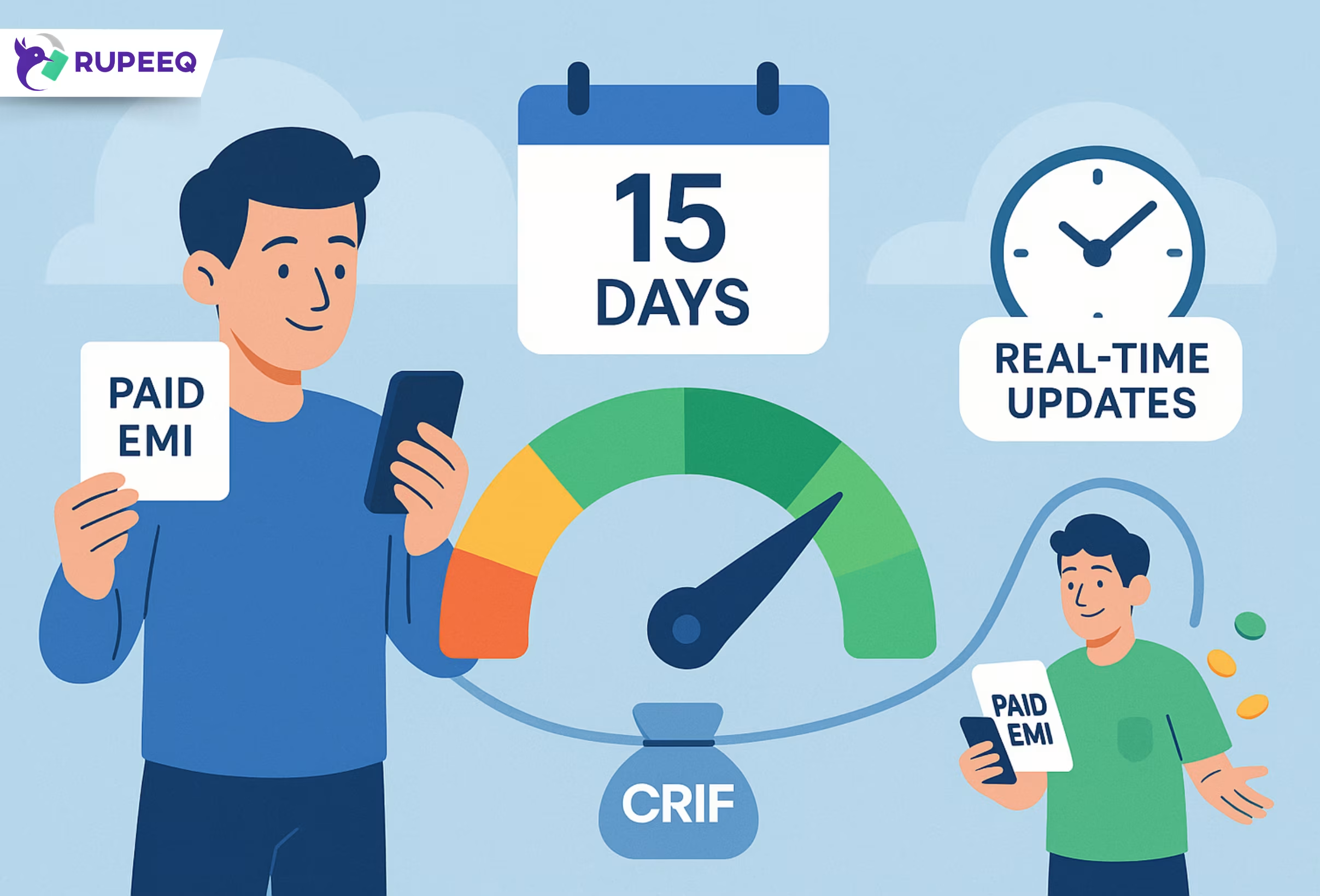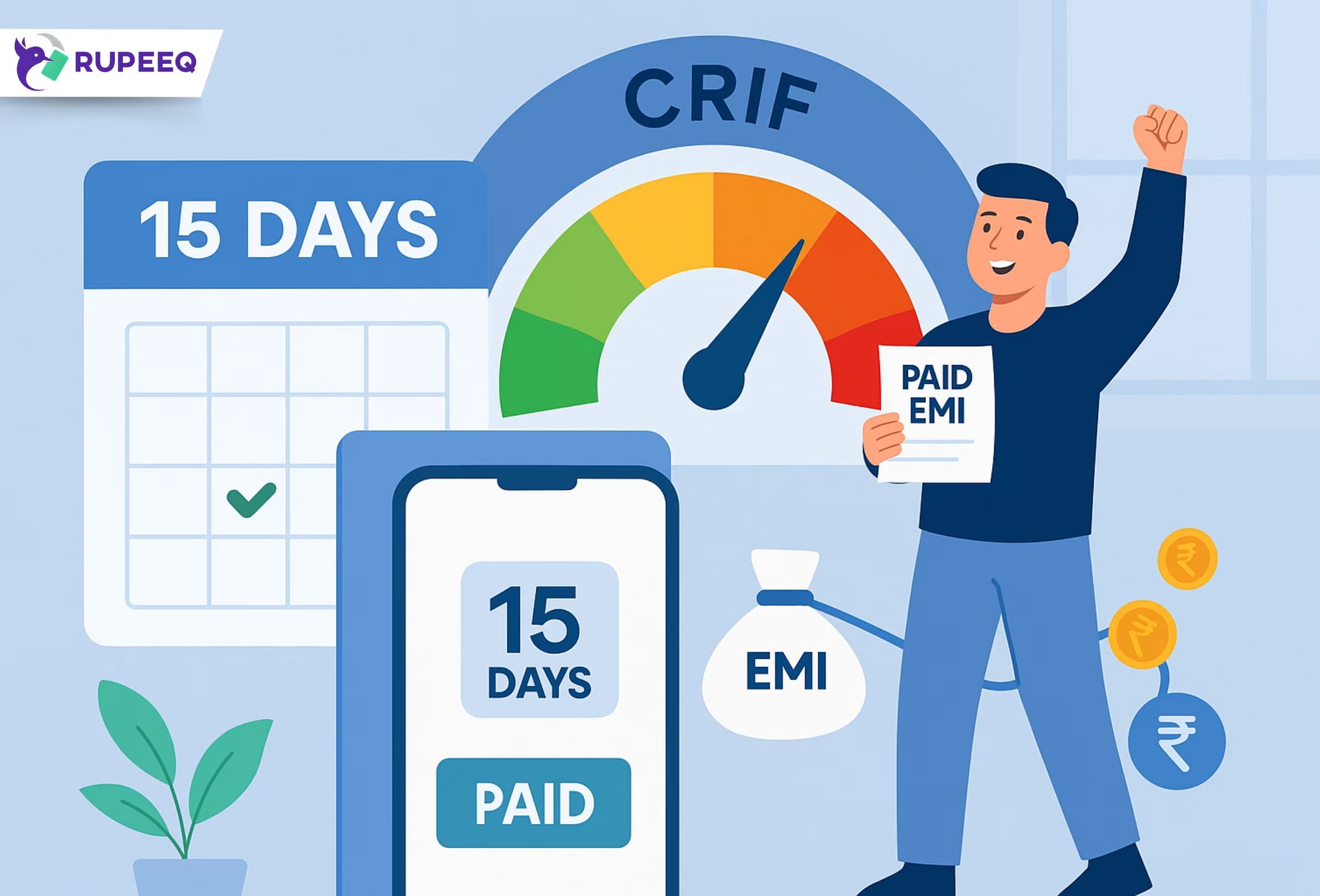Before you apply for a loan—whether it’s a personal loan, home loan, or car loan—lenders will check one thing without fail: your credit score. And among the four RBI-approved bureaus in India, CRIF Highmark is one of the most widely used.
If your CRIF score is high, you’re more likely to get faster approvals, lower interest rates, and better loan terms. But if your score is average or low, your application could get rejected or lead to unfavourable terms.
That’s why checking your CRIF credit score for free isn’t just a formality. It’s the first step toward improving your loan eligibility. In this blog, we’ll explain how to check your score, understand what it means, and use that information to boost your chances of getting the loan you want.
Why CRIF Credit Score Matters for Loan Eligibility
Lenders assess risk before giving out money. Your CRIF score is a 3-digit number (between 300 and 900) that helps them do that. Here’s how your score impacts your loan eligibility:
| CRIF Score Range | Meaning | Loan Eligibility |
| 750 – 900 | Excellent | High chance of approval, low interest |
| 700 – 749 | Good | Approved with standard terms |
| 650 – 699 | Fair | Possible approval with higher interest |
| Below 650 | Poor | Likely to be rejected or heavily scrutinized |
RupeeQ Tip: Use RupeeQ ACE to get a free CRIF score check along with in-depth insights into what’s helping or hurting your score.
How to Check Your CRIF Credit Score for Free
You can check your CRIF score once a year via the CRIF website, or you can use RupeeQ for unlimited checks with more features.
Step-by-Step via RupeeQ:
- Visit www.rupeeq.com
- Click on Check Free Credit Score
- Sign up or log in using your mobile number and PAN and fill in required details
- View your latest CRIF score and Advanced Credit Evaluation(RupeeQ ACE)
RupeeQ not only shows your score but also identifies the factors affecting it and provides guidance on how to improve.
How This Helps Improve Your Loan Eligibility
Checking your score is only the beginning. What truly matters is how you use that information to become loan-ready.
Let’s break it down:
1. Understand Where You Stand
Your credit report will show:
- Current score
- Open and closed loans
- EMI payment history
- Credit card utilization
- Number of enquiries (loan applications)
- Days Past Due (DPD) for each account
Example:
If your score is 690 and you’re applying for a personal loan, it’s better to wait and improve the score than to apply immediately and face rejection.
2. Spot the Issues Lowering Your Score
Once you identify problem areas, you can start fixing them.
Common issues:
- Missed EMIs or delayed payments
- High credit card usage
- Errors in the report (e.g., a loan marked active that’s already closed)
- Too many loan enquiries in the last 3–6 months
Fix it:
- Clear outstanding EMIs immediately
- Keep credit utilization below 30%
- Raise a dispute for incorrect information
RupeeQ Tip: You can raise credit report disputes directly from your My Report dashboard on RupeeQ.
3. Take Quick Actions to Improve Your Score
If you’re planning to apply for a loan soon, here’s what you can do over the next 30–90 days:
| Action | Result |
| Pay all upcoming EMIs on time | Boosts payment history |
| Pay down credit card balances | Reduces credit utilization |
| Avoid new loan applications | Prevents more hard inquiries |
| Review credit report for errors | Helps correct your score if mistaken |
Example:
Meena planned to apply for a home loan. Her CRIF score was 705. After reducing her credit card usage from 70% to 20% and avoiding any new applications for 2 months, her score went up to 745—making her eligible for lower interest rates.
4. Use Score Insights to Apply Smarter
When you check your CRIF score using RupeeQ, you don’t just get a number—you get actionable intelligence.
- Know if your score is strong enough for the loan you want
- Get matched with loan offers that suit your profile
- Avoid applications that are likely to be rejected
This saves you from multiple hard inquiries that can damage your score further.
RupeeQ Tip: Use the pre-approved offers shown on your RupeeQ dashboard to apply only where you have a high chance of approval.
When Should You Check Your Score?
- Before applying for any loan or credit card
- Every 3–6 months as a healthy financial habit
- After clearing any major loan or default
- If your last loan was rejected unexpectedly
Benefits of Using RupeeQ for CRIF Score Checks
| Feature | CRIF Website | RupeeQ |
| Free Score Check | Once a year | Unlimited |
| Credit Report Insights | Basic | Detailed (via RupeeQ ACE) |
| Loan Offers Based on Score | No | Yes |
| Dispute Raising Support | No | Yes |
| Score Improvement Suggestions | Limited | Actionable Tips |
Conclusion
Your CRIF credit score is a powerful financial tool—but only if you know how to use it wisely. By checking your score for free and understanding what affects it, you can take smart steps to improve your loan eligibility.
Platforms like RupeeQ make the process easier, faster, and more insightful. From real-time score access to personalized loan offers and dispute assistance, everything you need is in one place.
Before you apply for your next loan, pause and ask: “Have I checked my CRIF score yet?”
If the answer is no, then start now. It could be the difference between loan approval and rejection.
Frequently Asked Questions
Is checking my CRIF score via RupeeQ safe?
Yes. RupeeQ uses secure, encrypted systems and is integrated with CRIF Highmark, a licensed RBI credit bureau.
How often can I check my CRIF score for free?
Once a year via CRIF’s website, or unlimited times using RupeeQ.
Will checking my credit score affect it?
No. These are soft inquiries and do not impact your score.
What is a good CRIF score for loan eligibility?
Generally, 750+ is considered excellent, but many lenders approve loans above 700 as well.
Can I apply for a loan from RupeeQ directly?
Yes. You’ll see loan options matched to your score and can apply instantly.







